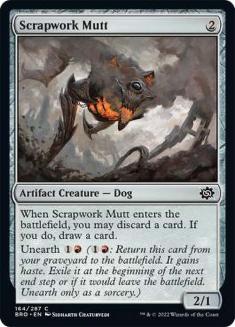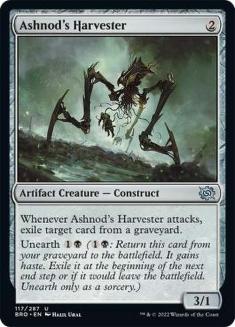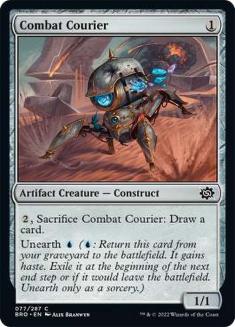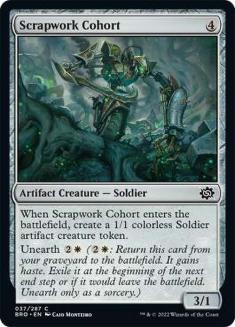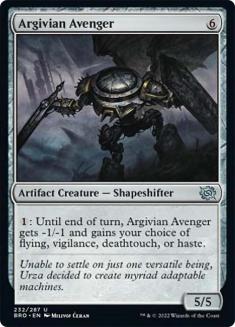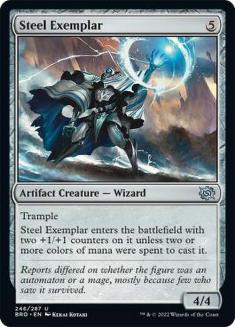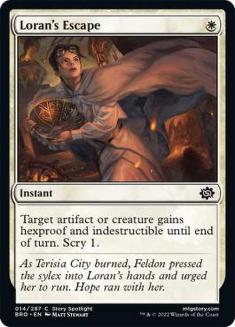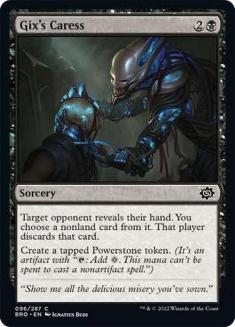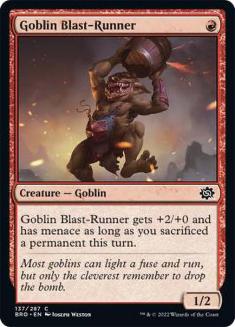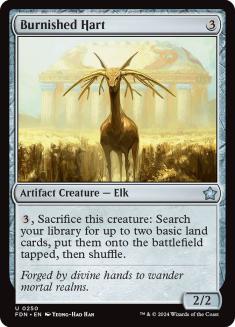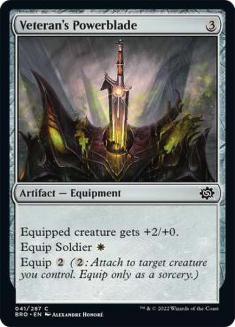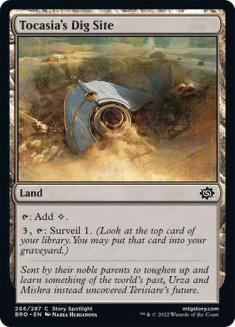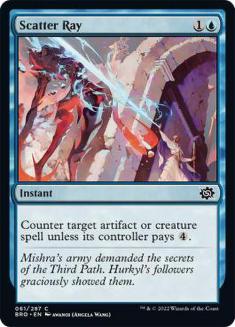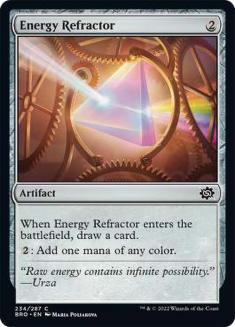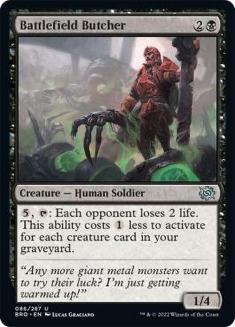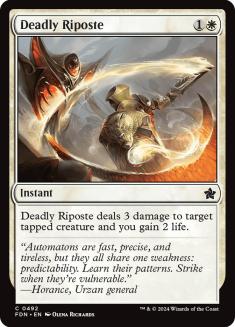At the beginning of each Limited format, I like to make sure I keep an open mind, trying most (if not all) of the archetypes to get a full understanding of the format before developing some preferences and trying to win. It’s too early to chime in on the metagame of The Brothers’ War, but I can say with certainty, it is a much faster format than I had initially believed.
Most people’s intuition would be that graveyard mechanics like unearth and ramp via Powerstones would indicate a slower format. However, based on my experience, as well as data, we’re looking at a fast format, somewhere in the neighborhood of Zendikar Rising and Throne of Eldraine. I wanted to speak briefly to the speed of the format before identifying the cards that have surprised me thus far, as I believe it will help to provide some context as to why the cards may be better or worse than originally anticipated.
Overperformers
I want to highlight Scrapwork Mutt as being a good Dog. I was a big fan of Fissure Wizard in Zendikar Rising, so I knew I’d already have a soft spot for it. What has surprised me is how strong it is in non-red decks, as well as how powerful the second rummage effect is. This thing really keeps your hand free of chaff, as well as being a two-drop that you are excited to exchange with another creature.
All of these have exceeded expectations. I was already pretty high on Ashnod’s Harvester, but I’ve heard it was surprising to others, so I figured I’d throw it in the mix. I’d assumed Combat Courier was playable in blue, but it has proven to be strong in every deck, providing card advantage if you can unearth it, as well as enabling sacrifice synergies. Scrapwork Cohort is actually pretty strong in certain archetypes like Azorius or Selesnya, and would be even if it didn’t have unearth. It’s one of the few unearth cards that leaves behind a tangible memento, in the form of a Soldier.
After playing with the set for a bit, it’s actually not too surprising any longer that Argivian Avenger is a real card. Obviously, your aggressive decks wouldn’t really want this Shapeshifter to avenge anything. In a midrange deck with a good amount of Powerstones, however, the Avenger will find its shape. A lot of the time, it will be a 4/4 flyer, but it can do some fun things like attack as a 3/3 flyer with vigilance, and block as a 5/5 threatening to become a 4/4 with deathtouch. The versatility is what makes this card shine.
I haven’t run into too many mono-colored decks, but they certainly exist, with Mono-Red being at the top of the heap. People often forget that paying colorless mana via Powerstones still allows the bonus counters. A strong line I’ve seen a couple of times is Turn 3 Excavation Explosion into a Turn 4 6/6 with trample.
Loran’s Escape reminds me a bit of Tamiyo’s Safekeeping from Kamigawa: Neon Dynasty. It’s a very unassuming card that is critically underdrafted at the beginning of the set. I’m here to help you get a jump on the competition: this is one of white’s most powerful commons, helping to both protect your creatures and push through combat steps. Pick one up for your next white deck and give it a shot!
Most people were surprised by this one, as it doesn’t really have a failsafe if it whiffs or you draw it late. That is compensated by the Powerstone that it provides being more powerful than anticipated, as well as how strong of a play this can be on Turn 3. Pseudo-ramping, looking at your opponent’s hand, and discarding their best card is a potent Turn 3 play. Powerstones are also great fodder in black for cards like Powerstone Fracture or Thraxodemon.
I’m starting to get a little better at questioning why cards are in a set during preview season. I’d be lying if I said I was hyped on Goblin Blast-Runner prior to release, but I did at least question it, entertaining the possibility that it could be a very real card. There are more than enough sacrifice enablers in this set so that this can pretty reliably be a 3/2 with menace when you need it to be. Cards like Bitter Reunion, Penregon Strongbull, Evolving Wilds, and Chromatic Star are just a few that immediately come to mind. Given the speed of the format mentioned at the beginning of the article, I’ve got this pinned as one of the best common creatures of the set.
Underperformers
We are definitely not in Theros anymore. This set has proven to be too fast for Burnished Hart. I’d recommend leaving the poor Elk out of your deck, unless you want its antlers mounted on your opponent’s trophy wall.
I’ve tried Veteran’s Powerblade in a couple of Soldier builds, and found it largely unimpressive. I figured it was a great weapon for Wing Commando or Ambush Paratrooper to fly with; however, taking Turn 3 off in an aggressive deck is enough of a tempo loss that the payoff is most often not worth the investment.
Sure, in a perfect world, you can picture Tocasia’s Dig Site helping to break battlefield stalls with ten lands lined up. That situation just doesn’t happen as often as you think. Not only do games not last long enough for this to shine, there are lots of other mana sinks available with a much better payoff.
Essence Scatter and it hits artifacts? I thought Scatter Ray was for sure an awesome card until I threw it in a few decks. Point-blank, you don’t want to be reactive during this set. In addition, countering unearth cards will leave you feeling scattered.
Energy Refractor is one of the artifact cantrips that is largely unexciting, and often detrimental. I’m not saying to avoid the card if it fills a role for fixing or enabling something like Mightstone’s Animation, but proceed with caution. Adding nothing to the battlefield on Turn 2 can often lead to your opponent snowballing the game, especially if you’re on the draw.
Another creature that has really been defined by the speed of the format. In a long grindy game, Battlefield Butcher provides a wall as well as inevitability. Sadly that’s not the world we live in. I don’t think the Butcher is unplayable, but often it will just be a 1/4 for three.
While not terribly exciting to begin with, Deadly Riposte seems to be a card you want to avoid. The main takeaway would be that white also wants to be aggressive, and would much rather be developing its battlefield instead of being reactive. This could be a good sideboard option, but I’d leave it out in best-of-one.
There’s still plenty to learn in this set. As the meta adapts to embracing a more aggressive stance, I’m sure more cards’ performance will shift from current expectations. Until next week, lose and learn, learn and win!


